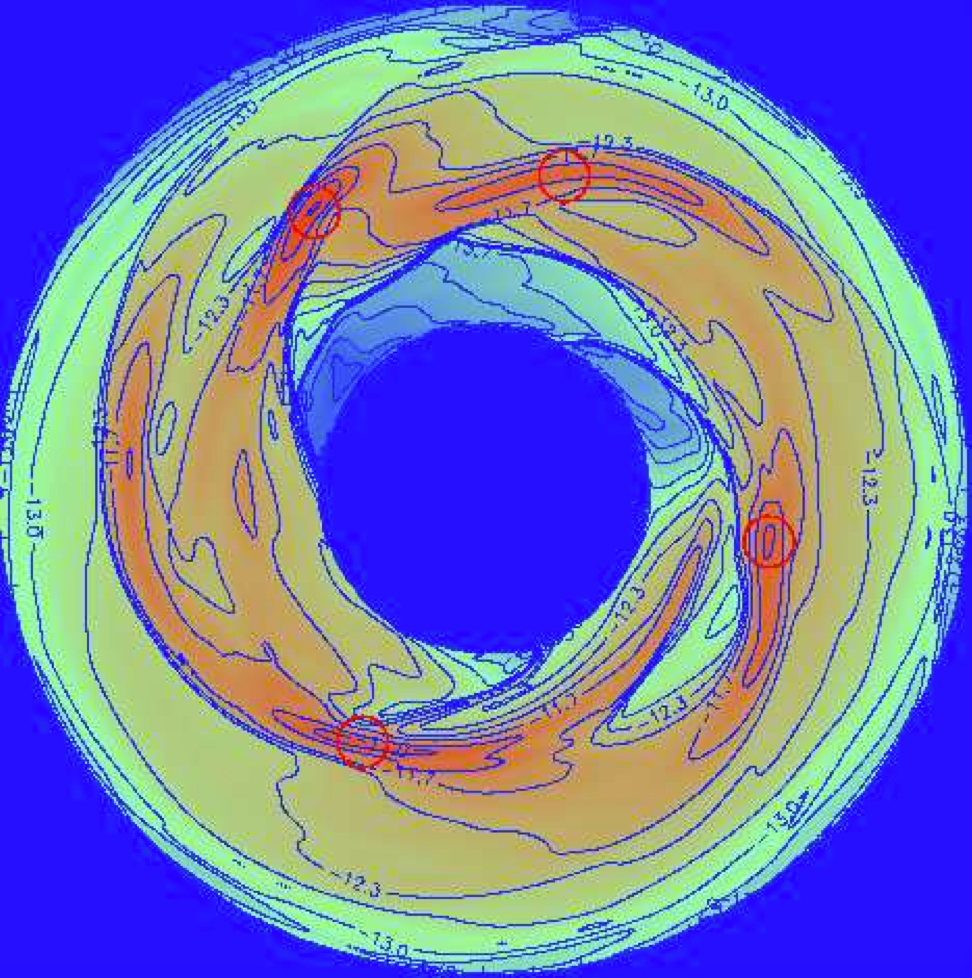Title: Observability of Photoevaporation Signatures in the Dust Continuum Emission of Transition Discs
Authors: Giovanni Picogna, Carolina Schäfer, Barbara Ercolano, Christian Rab, Rafael Franz, Matías Gárate
First Author’s Institution: Universitäts-Sternwarte, Ludwig-Maximilians-Universität München, München, Germany
Status: Accepted to MNRAS [closed access]
Protoplanetary disks can have all sorts of shapes and sizes. Those disks are made of gas and dust and form around stars showing beautiful rings, spirals, and other structures in observations! Not too long ago (only 8 years to be precise), researchers could only imagine what the disks looked like, as there were no direct observations. The only hint that there must be a disk present was the spectrum of a star. This is because in addition to the star, a disk emits radiation especially in the infrared regime, so in the spectrum an excess of infrared emission is visible. In 2015, however, the first direct observation (i.e. an actual image of a disk) was possible: the disk around HL Tau which amazed the research community by showing structures like rings and gaps that have not been expected before.
There are some disks that specifically show a hollow region, called a cavity, around their star. Those cavities can range up to several ten times the distance between the Sun and Earth, called astronomical unit (au). Even before direct observations were possible, researchers were able to distinguish disks with a cavity from disks without because they show a different spectrum shape (indicated in Figure 1).

Ever since observations indicated a large cavity in some disks, researchers started to investigate possible origins for this feature. Finding the causal mechanism is important because protoplanetary disks determine the conditions for the formation of planets. Therefore understanding the processes at work in the disk will give insight to planet formation. There are two main ways a cavity can form in a protoplanetary disk. The first one is called photoevaporation. In this scenario, the disk evaporates like a heated drop of water as the star heats up the disk through its radiation. The heated material from the disk then flies away into space moving like a wind. As the star’s radiation is stronger in the inner regions of the disk closer to the star, the inner part dissipates much faster than the outer part, leading to a cavity.
Another scenario to explain the formation of a cavity is a planet that is massive enough to distort the material in the disk. The planet pushes the material in the disk to the sides, carving a gap in the disk. Because of turbulence and friction in the disk, the material in the inner part of the disk then flows inward and falls onto the star, leading to a hollow inner region: the cavity.
Both mechanisms are possible explanations for a cavity. The question is: how can we tell from an observation which one is more likely?
Answering this question is why the authors of today’s paper investigated photoevaporation as a cause of a disk cavity in computer simulations. They set up three simulations with cavities of different sizes, i.e. 10 au, 20 au, and 30 au. Because the physical effect of photoevaporation is symmetric with respect to the disk’s rotation axis, the authors are able to use a two-dimensional model of the cross-section through the disk (Figure 2). They wait for the disk to reach an equilibrium (called steady-state), a state at which the simulation does not change anymore, and use the simulation result to infer observable signatures.

To investigate what the disks would look like in observations, the authors extend their two-dimensional simulations to three dimensions by making use of the symmetry of the photoevaporation process. They produce so-called synthetic observations by calculating the intensity of the disk and post-processing the images just like real observations. Figure 3 shows the resulting images.

The authors of today’s paper further compare their results with previously published studies of planets causing the cavity. They find that the photoevaporation case of 30 au actually looks very similar to cavities carved by a planet of one Jupiter mass. However, larger planets and other cavity sizes can produce features that can be distinguished.
In order to find more distinguishable differences, the authors take a look at a quantity called spectral index which can act as a measure of dust growth in protoplanetary disks. They find that the spectral index is larger in the photoevaporation case than in the case of planets causing the cavity. Thus, the spectral index can be used in observed disks to tell the cause of the cavity. Further observations and investigations will help to get to the bottom of these hollow disks!
Astrobite edited by Emma Clarke
Featured image credit: Lina Kimmig




